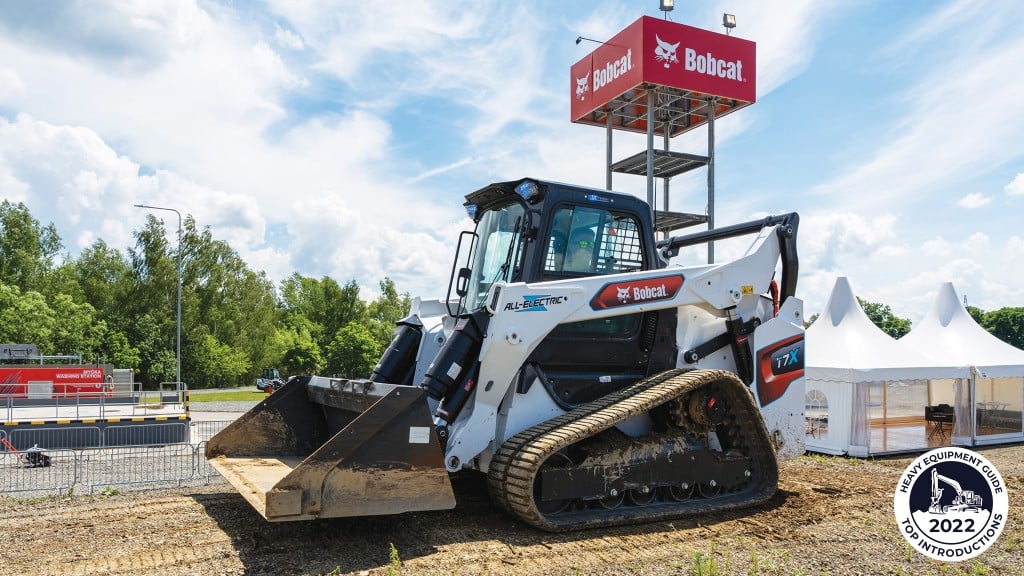
Extreme conditions – whether exceptionally hazardous terrain or very hot or cold temperatures – can present additional challenges when it comes to maintaining and operating a compact track loader (CTL). Here are a few key considerations to keep in mind when working in tough conditions.
How to maintain a CTL in freezing temperatures
Lee Padgett, product manager for Takeuchi, recommends always referring to the operator's manual for detailed maintenance instructions and performing a walk-around inspection of the machine before starting it up.
"When starting the machine in cold weather, use proper warm-up procedures as found in the operator's manual and always limit engine idling time," Padgett says. "A cold weather kit, such as a block heater, can help promote proper engine warmup in regions where glow plugs and intake air heaters are not sufficient to effectively start the engine."
Operators should also always make sure the windows and front glass are completely defrosted before operating. It can be tempting to skip this step, but having the best possible visibility at the worksite is safer and will help you do a better job.
At the end of the day, make sure the CTL's undercarriage is relatively clean, to prevent mud and debris from freezing up in the undercarriage components, causing premature wear and damage.
How to maintain a CTL in extreme heat
On the opposite end of the spectrum, there are also steps to take to address high ambient temperatures to ensure proper machine cooling. Refer to the operator's manual to ensure your machine is prepared for the change in season and temperatures.
First, clean and inspect the radiator and hydraulic cooler. Additionally, remove the belly pans so you can properly clean the compact track loader's tub, and then reinstall it before operating the machine. Often, this area becomes packed with mud and debris which can insulate components and prevent heat from dissipating efficiently.
"Keep an eye on the operating temperatures of engines and hydraulic components as well," Padgett says. "This is especially important when operating hydraulically powered attachments in hot weather. Before operating the machine, consult your manual to learn your specific machine's temperature guidelines."
If the operating temperatures approach the upper end of your machine's recommended range, remove the load until the machine has cooled. Then, take a few moments to clean and inspect the coolers again to ensure they are clear of debris.
"Your dealer can also be a valuable resource to not only make sure you have the right machine for the application, but to also advise of proper maintenance and care of the machine when operating in extreme temperatures," Padgett says.
How to operate a CTL safely in uncertain terrain
When beginning a new project, it is crucial to thoroughly inspect the job site to see what potential hazards exist. These hazards may include ledges, severe slopes, soft ground, and other conditions that are essential to identify and avoid while operating your CTL.
"Be aware of any underground or overhead utilities that may be nearby and make sure they have been properly identified," Padgett says. "Services like 811, First Call, or other underground location services are vital to determine where hazards are located so you can effectively avoid them for greater peace of mind."
Respecting the terrain when operating should also be a key priority. Slopes and soft ground can cause a CTL to shift suddenly and become unstable. It can also impact the machine's operating capacity and performance. It's also important to first consult the operator's manual before traversing up and down the face of a slope, as your ability to do so will be dictated by your CTL's capabilities, as well as the load and attachment.
"On certain terrain, speed can be the difference in maintaining machine control versus losing it," Padgett says. "It's best to travel with the load low and at a reasonable speed for the conditions."
Working around water presents additional and unique hazards, like ledges, water depth, and undercut banks. Crossing shallow water is sometimes necessary. As with all other operations, be sure of the terrain and exactly how deep the water is, what the bottom conditions are like, and if there is any current. Should operators need to cross water, they should never exceed the allowable water depth as instructed by the manufacturer, or let the engine, fan, or electrical components come in contact with the water.
"Understanding safe operational practices is a must, but it's especially critical in any harsh or potentially dangerous terrain," Padgett says. "Make sure that the most seasoned operators are in control of the machine, otherwise it could lead to a dangerous situation for the operator and possibly damage the machine."
For comparison, a newly licensed teenage driver may be capable of driving a few miles to school; however, the same driver may not be qualified to drive a pickup truck and small travel trailer through a mountain pass. Both involve driving a vehicle, but one requires much more skill and experience than the other. If the operator feels uneasy about using the CTL on a certain terrain, it's best to not take any chances.
"Be cautious and careful out there, whether in extreme temperatures or terrain," Padgett says. "Because at the end of the day, getting home safe and unharmed is the most important thing you can do."
Lynette Von Minden is a public relations manager with Swanson Russell.



